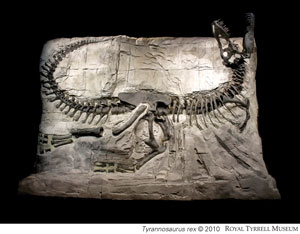
This year’s year-end dance revue by Carol Todor’s Dance School had a special guest, one that was tapping her toes on the stage of the Napier Theatre more than 50 years ago.
This was the second year the dance school has collaborated with the Napier for its year-end recital. This year the theme of the shows on May 9 and 10 was all vaudevillian. While the art of vaudeville predates their special guest’s performances by a few years, to have someone that performed in community variety acts in the 1940s, made the show special.
Beverly Larsen (nee Cowles) made her way from Chilliwack B.C. to take in the show. Bev is the mother of Napier Theatre owner Jeff Larsen, and she grew up in Drumheller. She had a trip planned for a family birthday party in Calgary, but arrived about a week early to see the Napier Theatre alive once again with dancing.

Of course, the theatre has changed. In 1951, the original building burned and the stage on which Bev performed is no longer there. While it was rebuilt as a theatre designed for motion pictures, the space still seems to have a live spirit.
Bev tells inSide Drumheller she thoroughly enjoyed the show, and the glint in her eye hints it may have brought back a few memories.
Many theatre-goers have probably seen Bev’s picture on a poster from 1949 at the Napier. While still a preteen, she was part of some of the community variety shows of the time produced by Horace McHeffey.
The show featured dancing, music and McHeffey’s famous ‘chalk talk’ where he would narrate a story and illustrate live as he spoke. The show also featured the traditional, if not politically correct, minstrel show. Bill Franklin would pound out a tune on the piano for all the acts.
Bev was born and raised in the valley. Her father was a carpenter who worked with Earl Parsons. He was also a musician, and played saxophone for a high school dance band along with Joe Yopek and Bob Llewellyn. Bev played piano.
She got her start dancing under the direction of Kay Bigelow.
As the mines closed in the 1940s and work dried up for her father, they moved to Calgary. The family came back every summer.
“I was never sorry I grew up here,” she said emphatically.
She enjoys visiting as the valley has always been home to her. Many of the landmarks remain, although many, including the Newcastle cottage schools and DHS where she attended, are no longer here. Neither is the Sylvia Theatre where she also performed.
“I never thought my son would come back to Drumheller and run the theatre,” she chuckles.
She is glad dancing is alive and well in the valley. Todor has now been operating her dance school for 26 years.
“It is great she has continued teaching,” said Bev, adding it great for the little ones to be involved in dancing.









